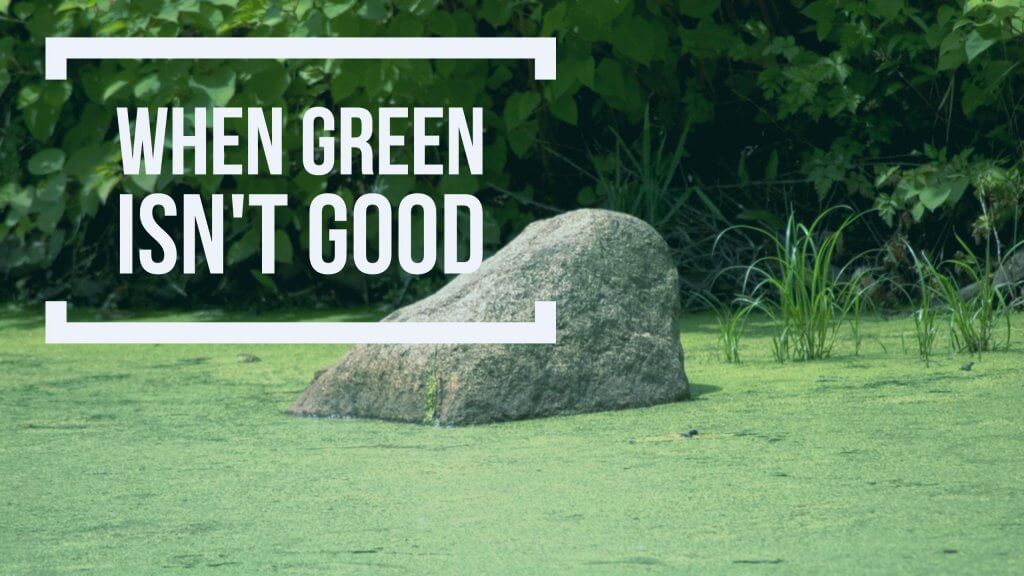Help! Our Pond Went Green, But Not in the Good Way!

Can you not see the pond for the water? If the ponds and other waterways on your business or public property are infested with unwanted vegetation, learn how you can eliminate it and prevent future growth so you can enjoy your grounds again.
Vegetation: Friend or Foe?
When you include ponds and waterways in your landscaping, or leave them there if they were there when you bought the property, it’s probably because you wanted to enhance the look of the property. A healthy body of water is a flattering addition, but how do you know if the growth breaking through the surface is harmful or beneficial?
Just like any environment, ponds and other waterways need movement so they don’t become stagnant. Fish and small aquatic wildlife are great for this purpose, but they need vegetation for survival.
- Some algae provide food for fish.
- Flowering plants provide shelter against the sun and predators.
- Rooted plants improve water quality by stabilizing the bottom and filtering pollutants.
- Aquatic plants are a source of oxygen for aquatic life.
It’s only when the vegetation becomes excessive that problems start to occur. Too much vegetation can:
- Impair swimming for wildlife
- Provide so much shelter that prey fish become overpopulated
- Reduce oxygen levels and kill off fish
- Impede water movement and cause stagnation
- Promote mosquito growth
- Have adverse effects on aesthetics
Common Problem Vegetation
There are plenty of types of pond “scum.” If the water surface looks oily, streaky or has an off color such as yellow-green, red or black, this is an indication of microscopic algae. Fertilizers and nutrient-rich water runoff can cause microscopic algae streaks anywhere on the surface. Mat-forming algae is sometimes mistaken for moss and begins around the edges or shoreline of the water. It causes a blanket of vegetation that blocks oxygen production and movement underneath. Chara, or stonewort, is another type of algae that can become troublesome if it grows up to the surface.
Flowering plants and grasses might seem prettier, but they too can inhibit the health of the water if allowed to invade. Spatterdock, watershield, water lettuce, cattails, spikerush, water hyacinth and creeping water primrose are all species that tend to invade otherwise healthy bodies of water.
How to See the Water Again
The size and depth of the pond or water way, in addition to the type of invasive species, will greatly contribute to the possible solutions for abatement. You want to be able to rid the water of the infestation but not harm the fish and animal population within the water. Managing the water with herbicides, algaecides and eco-friendly treatments is the best way to get rid of pond scum while encouraging healthy vegetation growth.
- If the body of water is too shallow or the vegetation is too dense for a conventional propeller-driven craft, an air boat can be used to get out on the water, spray herbicides and extrude submersed vegetation.
- For areas deep enough for propeller-driven boats, a flat-bottom boat is useful for distributing pellet herbicides and using a spray gun.
- In wetland areas not conducive to water craft, a four-wheel drive vehicle called a log skidder may be useful for spraying the base of trees and shallow areas.
- For larger bodies of water that are mainly affected by invasive species along the shorelines and boat landings, a high volume spray truck comes in handy.
Coastal Spray offers all of these methods and can help you get the lovely landscape you’ve been hoping for. Go green in the good way and enhance your property with a healthy and well-managed aquatic feature.